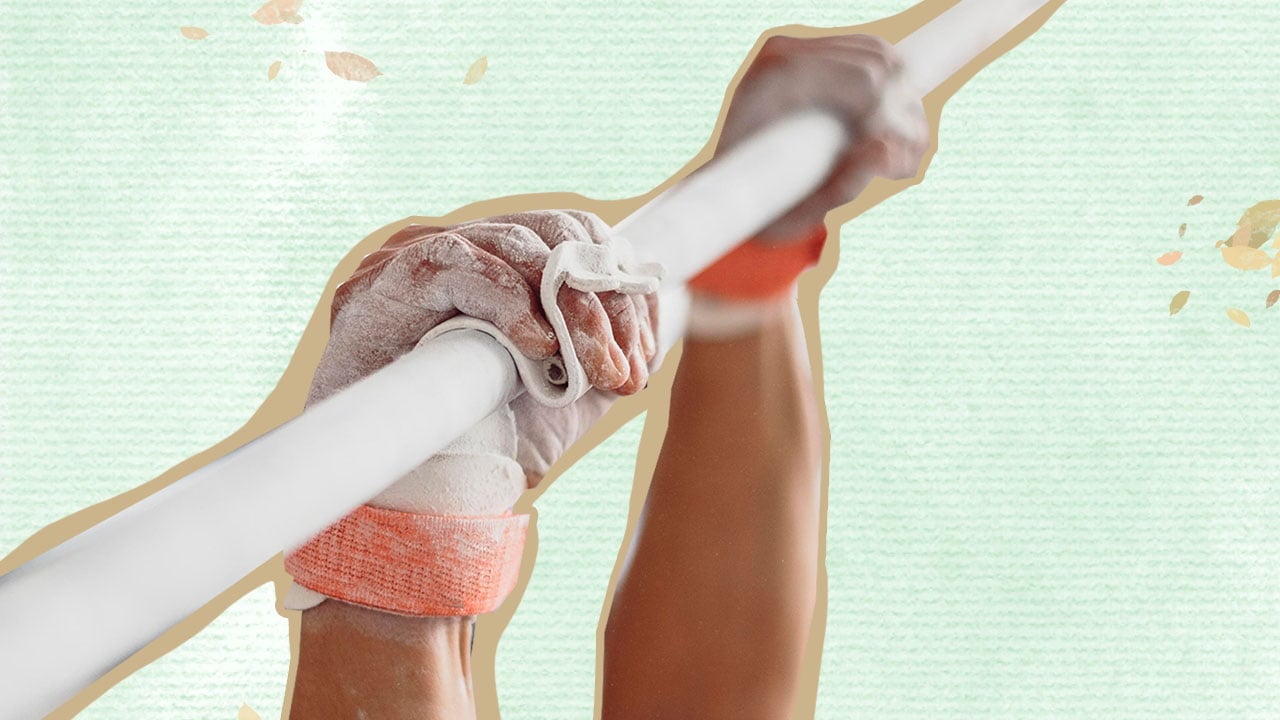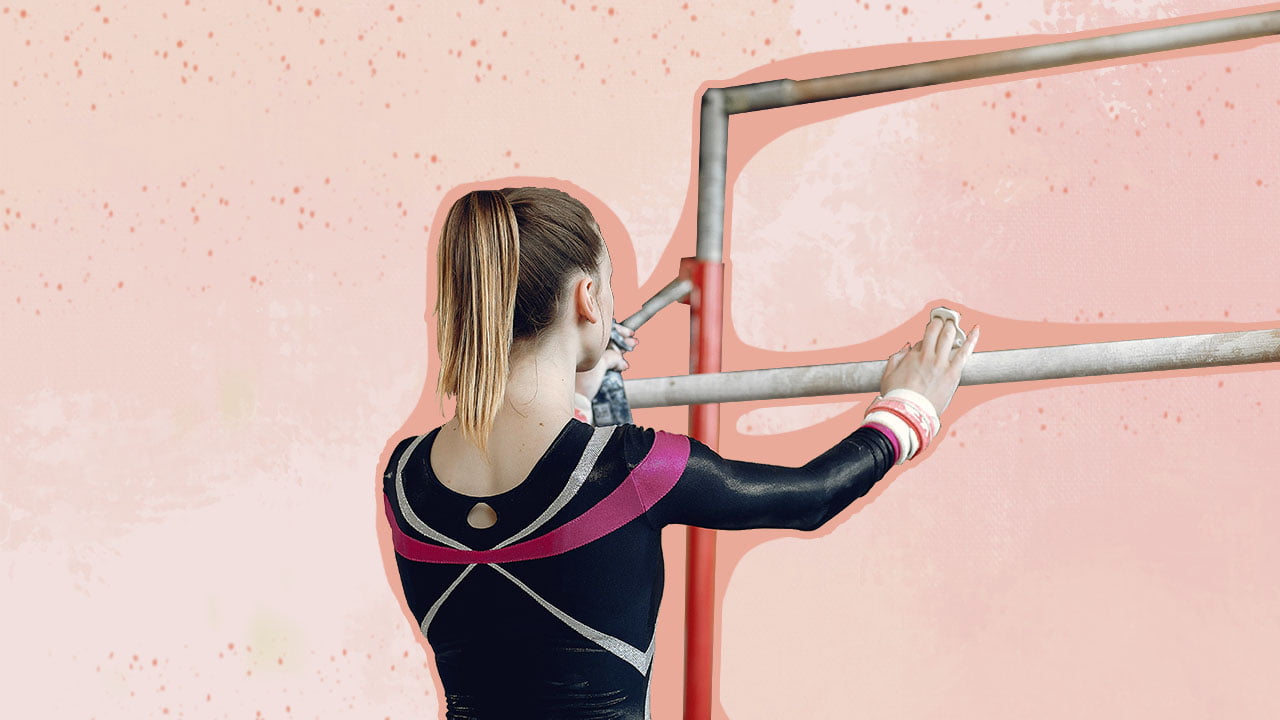What Are They Spraying On The Uneven Bars In Gymnastics
Most gymnasts use a variety of substances like chalk powder, honey, and corn syrup mixed with water to create a “gripping spray” for the bars. However, some substances like honey can be used on their own. It’s not unusual for gymnasts to spray or apply a liquid before practicing or performing. Now, this may seem […]

Most gymnasts use a variety of substances like chalk powder, honey, and corn syrup mixed with water to create a “gripping spray” for the bars. However, some substances like honey can be used on their own.
It’s not unusual for gymnasts to spray or apply a liquid before practicing or performing. Now, this may seem to be a “cheat code,” but it’s an important part of their routine that helps them perform better. But what do they actually use for this purpose?
To answer that and provide you with the most effective application tips, I’ve curated this short yet extensive guide. Read on to know more!
What Are The Uneven Bars Made Of In The First Place?

Well, before I divulge the details of what gets sprayed on the uneven bars in gymnastics, let me quickly walk you through the basic construction of these bars. This will help you understand the purpose of the spray and how it serves that purpose.
Uneven bars, also called asymmetrical bars, rails, or simple bars, are a set of parallel bars generally comprising a frame and the bars with a distance of about 6 feet between them. While the frame is typically hollow and made of a metal-like steel, the bars are made either out of fiberglass or metal with a wooden coating to provide a smooth surface.
Fiberglass uneven bars are commonly used for women’s gymnastics, and their steel counterparts are used for men’s gymnastics. This is largely based on the fact that male gymnasts usually weigh heavier than female gymnasts, and so they need something stronger to support their body weight.
Anyway, the smooth surface of the uneven bars, albeit important to aid stability for the gymnasts, make it difficult for them to perform handstands and other movements without slipping. Since this surface cannot have a grooved design, gymnasts use different compounds to give them the required stability. Think of these compounds as an “anti-lubrication” system that counters the slipperiness of the uneven bars.
How Do Gymnasts Prepare Uneven Bars?
Making the uneven bars “usable” is actually a two-step process. If you follow artistic gymnastics (or any other form, for that matter), you’d know that top gymnasts like Sunisa Lee, on the biggest stages (like the Tokyo Olympics), apply something white on their hands and legs.
This substance is gymnasts’ chalk, which is made of magnesium carbonate, but it’s different from the commonly used calcium carbonate classroom chalk.
Gymnasts’ chalk helps the gymnasts keep their hands and legs dry by absorbing the sweat, as well as to reduce friction and the chances of them slipping and falling. Not only does this offer them a better grip to perform optimally, but it also keeps them from falling down and plays a crucial role in preventing injuries. After all, staying safe during the performance should also be a priority for them.
The next part of the process involves spraying the parallel bars with a gripping agent, which is typically a solution of water and resin- one of the most common substances used in this regard. Gymnasts typically throw resin on the horizontal bar, spray them with water, and apply more resin. This step is repeated until they achieve the desired grip.
Some Other Alternatives To Perfect The “Gymnast’s Grip”
If you have ever visited gymnastics facilities near you, you may have noticed honey bottles lying around the bars. Now, you may be thinking that the sweetener is consumed by athletes, but it’s actually used as a means to get a good grip on the bar, especially by male gymnasts. This method has been used by many professional gymnasts, including former champion Trent Wells.
Tip
If you’re an aspiring gymnast planning to use this method, then the best way to do so is by taking the honey in your hands and rubbing it in your palms. Then, rub your hands along the bars and dust your palms and the bars with chalk before gripping them.
Aside from this, many gymnasts use other sticky substances, like corn syrup or Karo syrup, for a similar effect. On the other hand, female gymnasts typically spray water on the bars and follow it up with a light dusting of chalk.
You will also be surprised to know that both men and women gymnasts have come up with creative ways to ensure optimum grip on the surface. For instance, some people have used molten gummies, honey mixed with chalk powder, and even beer in addition to applying water.
Long story short, no matter what substance you use, its main purpose remains the same.
Some Gymnastics Trivia
If you have made it this far in the guide, it may be safe for me to assume that you or your loved one is interested in this sport. So, I have a little bonus for you- here are some must-know facts about the sport:
1. Men Don’t Compete On Uneven Bars
Male gymnasts don’t compete on uneven bars in The Olympics, as it’s generally believed that they have more strength in the upper half of their body. Hence, officials have designated events like rings and high bar performances for them, which require more arm strength.
Women, on the other hand, carry their weight in the lower half of the body, which is why you’d find them competing on uneven bars. Moreover, this apparatus is said to bring out and help viewers focus more on feminine physicality.
2. Uneven Bars Are Not Always Adjustable
The other thing to take note of about the height of uneven bars is that they aren’t always adjustable. While junior gymnasts use adjustable bars for skill development, elite or professional gymnastic competitions require performing on standardized non-adjustable uneven bars. Generally, the height of the low bar is fixed at 5 ½-feet, while the high bar is set at a little over 8 feet.
3. Coaches Can Assist The Athletes
Yes, you read that right. Your coach can stand underneath the uneven bars to catch you should you make any mistake and fall. However, they aren’t allowed to help you with the routine itself.

Spraying On The Uneven Bars In Gymnastics Final Words
And with that, it’s time for me to wrap up today’s guide!
But before that, here’s one important piece of advice: all gripping materials don’t work for everyone. So, make sure you take your time to figure out what works best for you. For instance, you may find that applying corn syrup without any water helps you find the best grip.
And if you’re using water, make sure not to use too much, as that will only add to the slipperiness of the surface. See you next time!
